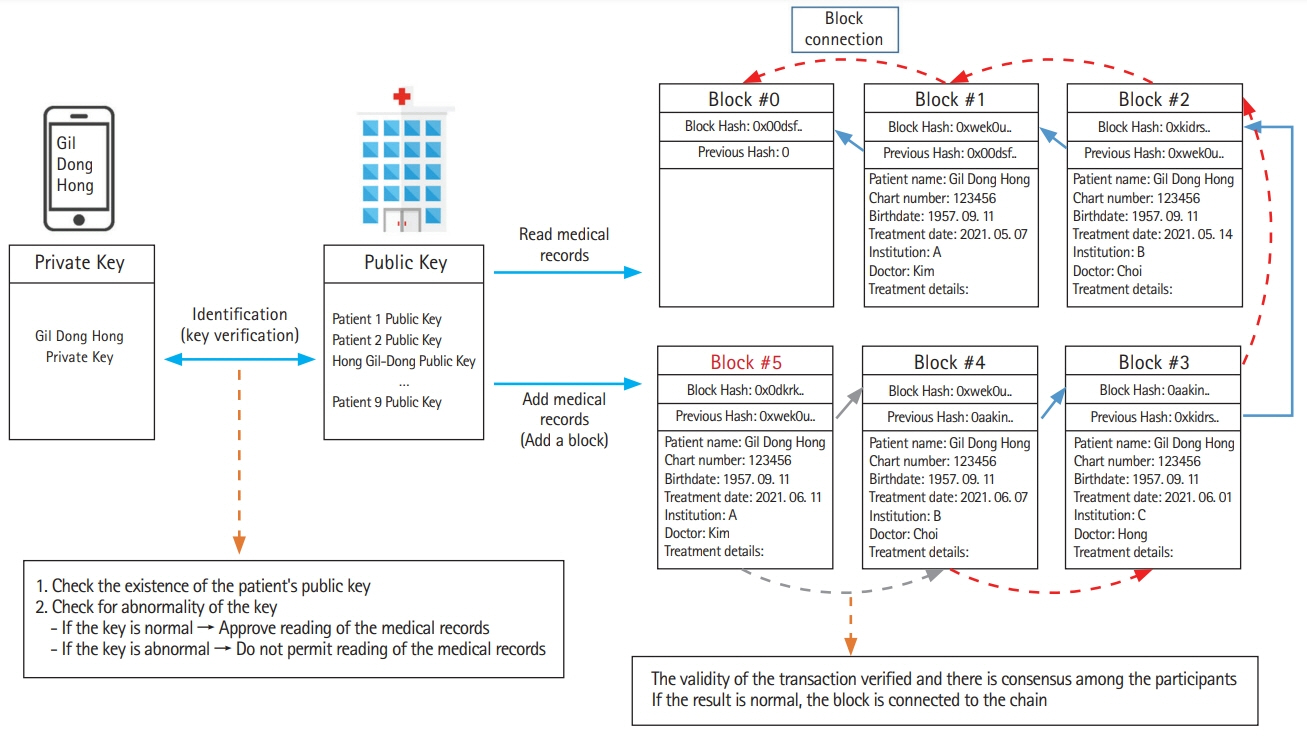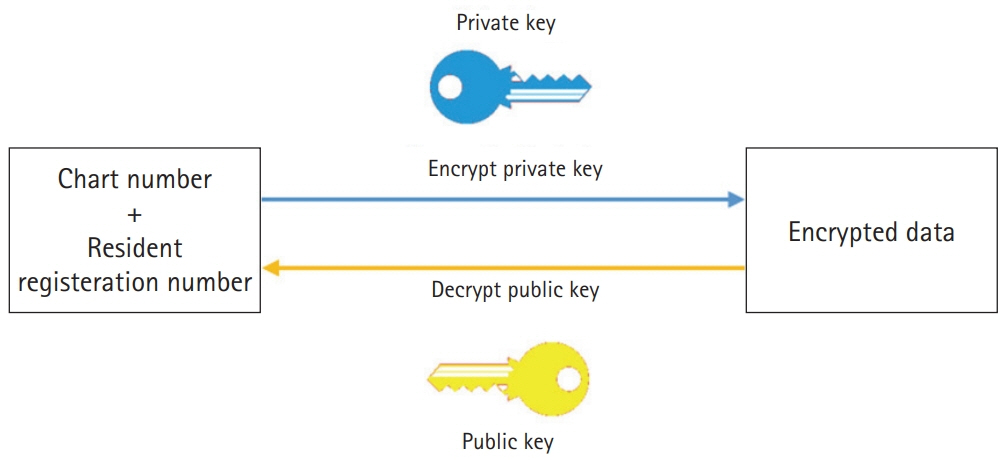J Yeungnam Med Sci.
2022 Apr;39(2):98-107. 10.12701/yujm.2021.01368.
Storing information of stroke rehabilitation patients using blockchain technology: a software study
- Affiliations
-
- 1Department of Physical Medicine and Rehabilitation, Yeungnam University College of Medicine, Daegu, Korea
- KMID: 2529267
- DOI: http://doi.org/10.12701/yujm.2021.01368
Abstract
- Background
Stroke patients usually experience damage to multiple functions and a long rehabilitation period. Hence, there is a large volume of patient clinical information. It thus takes a long time for clinicians to identify the patient’s information and essential pieces of information may be overlooked. To solve this, we stored the essential clinical information of stroke patients in a blockchain and implemented the blockchain technology using the Java programming language.
Methods
We created a mini blockchain to store the medical information of patients using the Java programming language.
Results
After generating a unique pair of public/private keys for identity verification, a patient’s identity is verified by applying the Elliptic Curve Digital Signature Algorithm based on the generated keys. When the identity verification is complete, new medical data are stored in the transaction list and the generated transaction is verified. When verification is completed normally, the block hash value is derived using the transaction value and the hash value of the previous block. The hash value of the previous block is then stored in the generated block to interconnect the blocks.
Conclusion
We demonstrated that blockchain can be used to store and deliver the patient information of stroke patients. It may be difficult to directly implement the code that we developed in the medical field, but it can serve as a starting point for the creation of a blockchain system to be used in the field.
Keyword
Figure
Reference
-
References
1. Chang MC, Hau YS, Park JC, Lee JM. The application of blockchain technology in stroke rehabilitation. Am J Phys Med Rehabil. 2019; 98:e74.2. Kuo TT, Kim HE, Ohno-Machado L. Blockchain distributed ledger technologies for biomedical and health care applications. J Am Med Inform Assoc. 2017; 24:1211–20.3. Chang MC, Hsiao MY, Boudier-Revéret M. Blockchain technology: efficiently managing medical information in the pain management field. Pain Med. 2020; 21:1512–3.4. Dutta P, Choi TM, Somani S, Butala R. Blockchain technology in supply chain operations: applications, challenges and research opportunities. Transp Res E Logist Transp Rev. 2020; 142:102067.5. Karandikar N, Chakravorty A, Rong C. Blockchain based transaction system with fungible and non-fungible tokens for a community-based energy infrastructure. Sensors (Basel). 2021; 21:3822.6. Fang HS, Tan TH, Tan YF, Tan CJM. Blockchain personal health records: systematic review. J Med Internet Res. 2021; 23:e25094.7. Kim JK, Hau YS, Kwak S, Chang MC. Essential medical information for stroke patients undergoing interhospital transfer: a Delphi study. Am J Phys Med Rehabil. 2021; 100:354–8.
- Full Text Links
- Actions
-
Cited
- CITED
-
- Close
- Share
- Similar articles
-
- Blockchain: An Overview and Its Applications in Aviation
- Blockchain Applications for Healthcare Data Management
- Pediatricians’ perception of factors concerning the clinical application of blockchain technology to pediatric health care: a questionnaire survey
- Blockchain Revolution in Healthcare : The Era of Patient-centered Dental Information System
- Patient Consent Management by a Purpose-Based Consent Model for Electronic Health Record Based on Blockchain Technology




